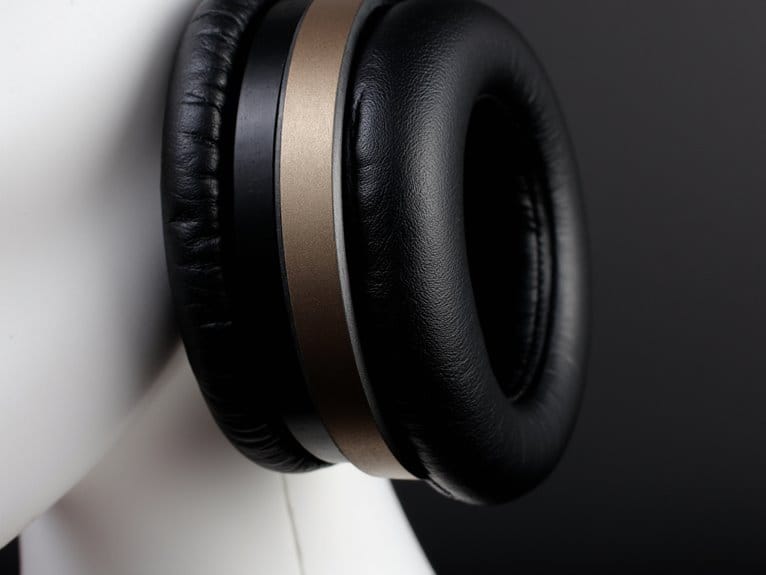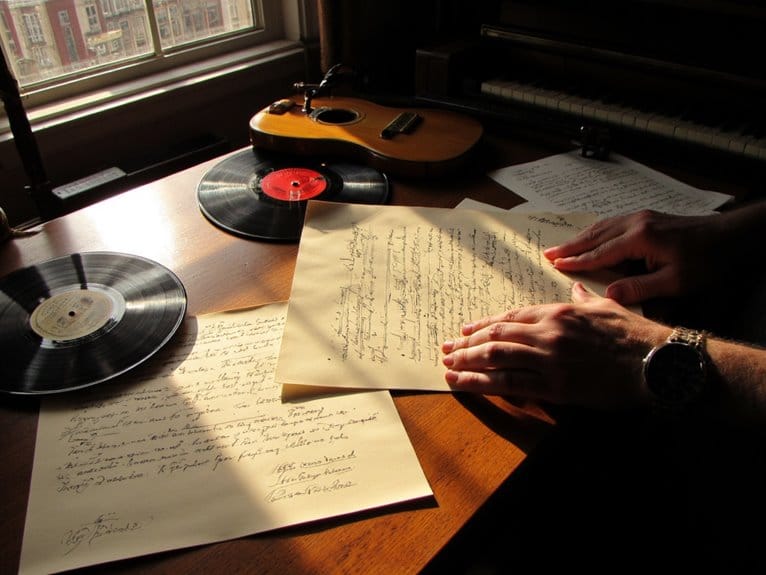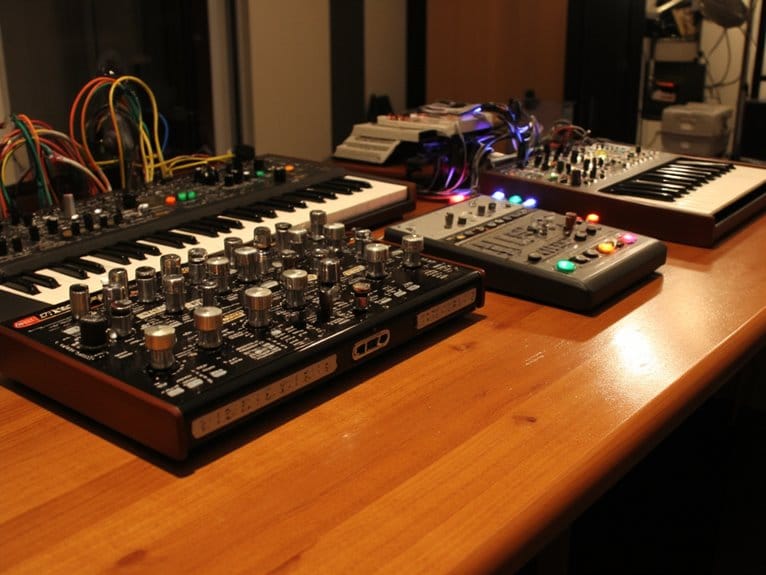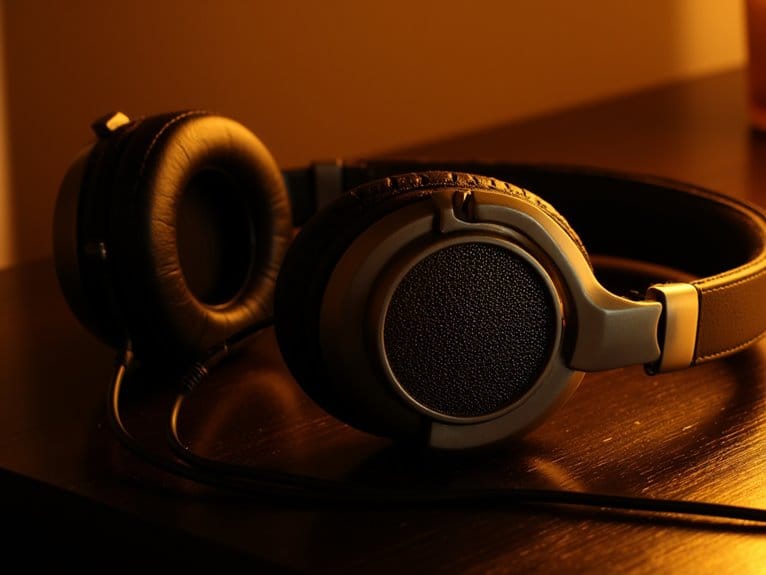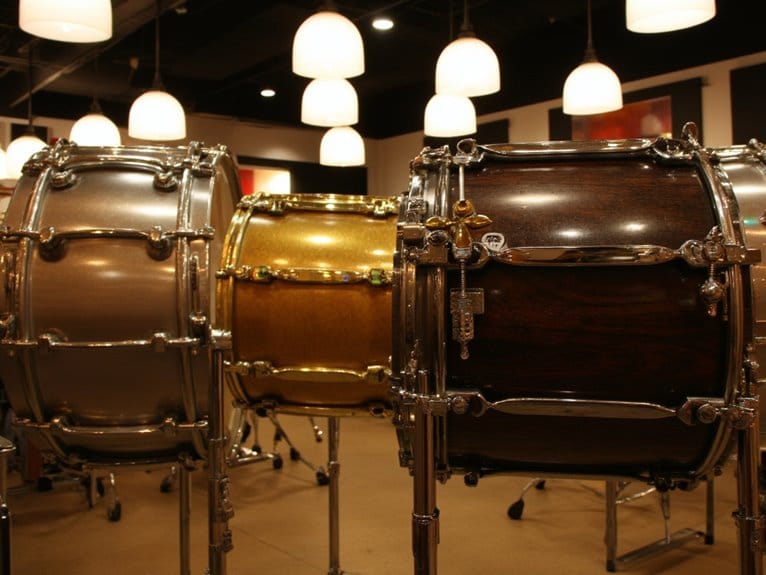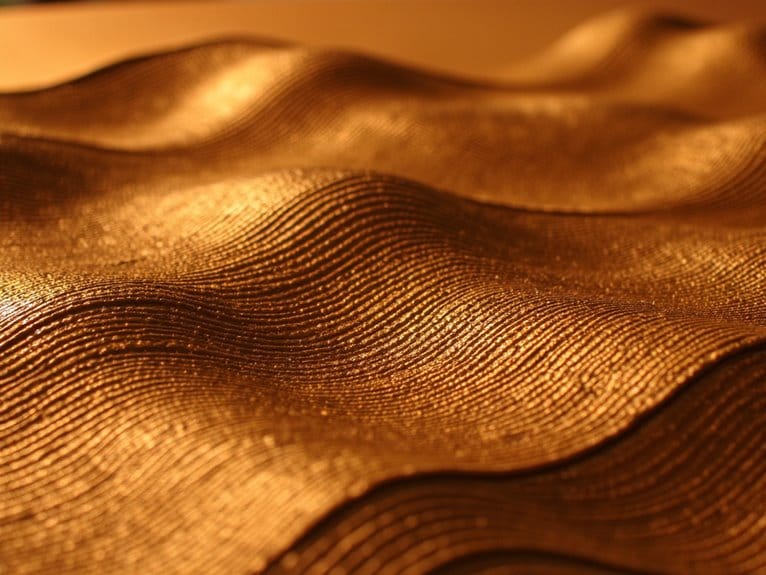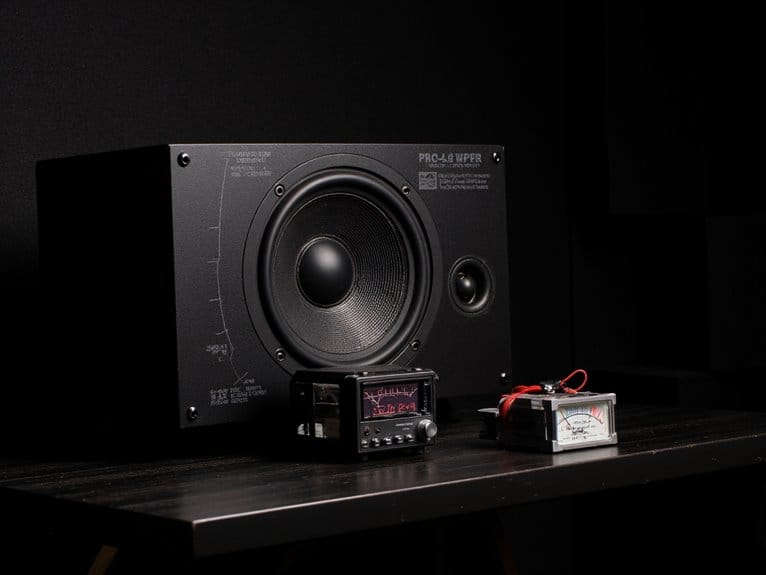Understanding Headphone Isolation and Why It Matters
Headphone isolation determines how effectively your headphones block external noise, using either passive barriers like foam ear tips that physically seal your ears, or active noise cancellation that generates inverse sound waves to counter ambient sounds. Passive isolation excels at blocking high frequencies and voices, while active cancellation tackles low-frequency rumbles but requires battery power. The quality of your ear seal directly impacts performance, with proper-fitting headphones providing up to 35dB of noise reduction. Understanding these fundamentals will help you maximize your audio experience.
We are supported by our audience. When you purchase through links on our site, we may earn an affiliate commission, at no extra cost for you. Learn more.
Notable Insights
- Headphone isolation blocks external sounds using physical barriers, protecting hearing and enhancing comfort during extended listening sessions.
- Passive isolation excels at blocking high frequencies while active noise cancellation works better for low-frequency ambient sounds.
- Effective isolation requires proper seal quality, with in-ear monitors needing over 35dB noise reduction for optimal performance.
- Over-ear headphones provide superior isolation for travel, while in-ear options offer convenience and portability for active use.
- Future developments include AI-driven adaptive systems that analyze environments and adjust isolation based on daily activity levels.
What Is Headphone Isolation and Why Does It Matter?
When you’re trying to enjoy your music on a crowded subway or focus during a lengthy flight, headphone isolation becomes your first line of defense against the chaos around you. This passive noise-blocking technology works by creating a physical barrier between your ears and external sound environments, using foam or rubber materials that seal your ear canal completely.
Unlike active cancellation systems that require batteries, isolation relies entirely on proper fit and quality materials to reduce noise distractions effectively. The isolation benefits extend beyond simple noise reduction, protecting your ear health from potentially damaging ambient sounds while enhancing comfort levels during extended listening sessions. This approach is particularly energy-efficient since it doesn’t require additional power to function.
Your listening preferences determine whether this foundational approach suits your specific audio needs. Closed-back headphones excel in these applications due to their circumaural design that effectively seals around the ears for maximum isolation. Premium models with memory foam ear cups can achieve superior passive acoustic isolation compared to standard padding materials. High-quality earphones can achieve up to 50dB noise reduction when properly fitted with effective sealing mechanisms.
Passive Isolation Vs Active Noise Cancellation: Key Differences
When you’re choosing between passive isolation and active noise cancellation, understanding how each technology operates, performs under different conditions, and encounters specific limitations will help you make the right decision for your listening needs.
I’ve found that while passive isolation relies entirely on physical barriers like thick ear cups and tight seals to block external sounds, active noise cancellation uses sophisticated microphones and processors to generate inverse sound waves that electronically cancel ambient noise through destructive interference.
You’ll notice significant differences in their effectiveness against various frequency ranges, power requirements, and real-world performance scenarios that directly impact your listening experience. Models with transparency modes allow you to balance isolation with environmental awareness when needed.
Active noise cancellation technology can achieve impressive results, with top models using dual noise sensors to reduce ambient noise by 90% to 96.6% while maintaining exceptional sound quality.
How Each Works
Understanding how passive isolation and active noise cancellation work reveals two fundamentally different approaches to achieving the same goal, though I’ll admit the physics behind each method couldn’t be more opposite.
Passive isolation relies on physical barriers-think dense foam ear cups or snug-fitting ear tips-that mechanically block sound waves from reaching your ears. Different headphone types achieve isolation benefits through varying seal quality and material density.
| Method | Power Required | Frequency Range |
|---|---|---|
| Passive | None | Broad spectrum |
| Active | Battery | Low frequencies |
| Hybrid | Battery | Full spectrum |
| Custom IEMs | None | Superior broad |
Active noise cancellation uses microphones to detect ambient sounds, then generates inverse sound waves that cancel incoming noise through destructive interference. This electronic process targets low-frequency, constant sounds like airplane engines while consuming battery power continuously.
Performance and Limitations
While both technologies aim to reduce unwanted ambient sound, their performance characteristics and inherent limitations couldn’t be more different in practice.
Active noise cancellation delivers impressive noise reduction for low-frequency sounds like airplane engines, potentially reducing levels by up to 40 dB, but its sound processing can introduce audio artifacts that purists find objectionable.
Passive isolation, conversely, excels at blocking high-frequency noises and voices without any electronic interference, maintaining your music’s natural frequency response.
However, active systems face physical constraints from driver capabilities and require battery power, adding weight and complexity.
Passive designs depend entirely on achieving a proper seal, which isn’t always comfortable for extended listening sessions, and they can’t adapt to changing environmental conditions like their electronic counterparts.
Design Factors That Impact Isolation Performance
When you’re evaluating headphones for isolation performance, I’ve found that three essential design elements consistently determine how well they’ll block external noise from reaching your ears.
The physical seal quality between your headphones and ears creates the primary barrier against ambient sound, while the earphone fit design determines how effectively that seal conforms to your unique ear shape and size.
Additionally, the clamping force affects how consistently your headphones maintain that vital seal during movement, though you’ll need to balance isolation benefits with long-term wearing comfort.
Quality in-ear monitors should provide 35dB+ of noise isolation to effectively block sound in loud environments and protect your hearing from prolonged exposure to high volumes.
Physical Seal Quality
The physical seal between your headphones and head determines how effectively they’ll block outside noise, and frankly, most people underestimate just how essential this seemingly simple contact point really is.
Your ear pads must conform perfectly to your head’s contours, creating an airtight barrier that prevents sound leakage in both directions. High-density memory foam excels here because it molds to your unique anatomy while maintaining consistent pressure over time.
The earcup geometry plays an equally crucial role-deep, oval-shaped cups that fully encompass your ears provide superior isolation compared to shallow, round designs.
However, seal durability becomes compromised as padding materials degrade from use and environmental exposure, gradually reducing isolation performance until replacement becomes necessary.
Earphone Fit Design
Earphone isolation performance hinges on a complex interplay of design factors that I’ve found most users don’t fully appreciate until they experience the dramatic difference between a well-fitted and poorly-fitted pair.
Your earphone’s nozzle diameter and shape fundamentally determine which ear tip types can create an effective seal, while the retention mechanism-whether friction fit or specialized locking systems-affects how securely tips stay positioned during movement.
I’ve noticed that mismatched nozzle-tip combinations often cause tip collapse, completely undermining isolation efforts.
The interface between your earphone’s design and your unique ear canal anatomy becomes critical here, as some manufacturers now provide interchangeable nozzle adapters to accommodate various tip sizes and shapes, fundamentally expanding compatibility across different ear geometries and improving your chances of achieving ideal isolation performance.
Clamping Force Effects
Although I’ve spent countless hours testing headphones with varying clamping forces, I’m still amazed by how dramatically this single design element can make or break your isolation experience.
When you’re wearing headphones with proper clamping force, the ear cups create an effective seal that blocks outside noise, but there’s a delicate balance at play. Too little pressure and sound leaks in, compromising your listening experience, while excessive force can cause jaw pain, headaches, and TMJ discomfort that’ll have you reaching for the ibuprofen.
The comfort trade offs become particularly apparent during extended sessions, where even well-padded headphones can create pressure points that make professional monitoring or gaming marathons unbearable, forcing you to choose between ideal isolation and sustainable wear time.
Frequently Asked Questions
Can Wearing Headphones With High Isolation Cause Ear Pressure or Discomfort?
Yes, you’ll experience ear discomfort from high-isolation headphones due to pressure sensations and physical fit issues. Different isolation types create varying degrees of ear fullness, especially during prolonged use sessions.
Can Headphone Isolation Worsen Tinnitus or Other Existing Hearing Conditions?
Headphone isolation can worsen tinnitus for some people by increasing awareness of internal sounds, though others find relief through better tinnitus management and hearing protection from external noise.
On a final note
You’ve now got the knowledge to make an informed decision about headphone isolation. Whether you need the physical barrier of passive isolation for consistent performance, or the electronic sophistication of active noise cancellation for variable environments, you’ll know what matters. Don’t just buy based on brand recognition-consider your specific use case, test isolation performance when possible, and remember that the best headphones are the ones that actually match your listening habits.

